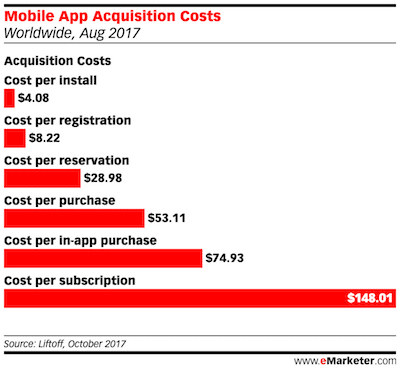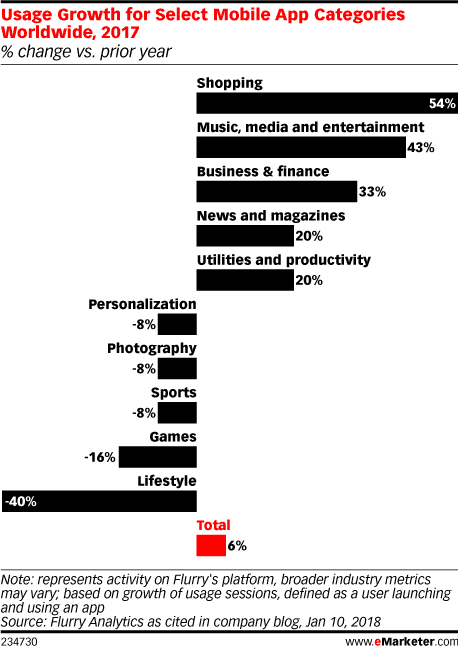This article was originally published on the TUNE blog. Branch acquired the TUNE Attribution Analytics product in September 2018, and we have republished select pieces of content for the enjoyment of Branch customers.
Since the dawn of app marketing, the majority of marketers have used the app install as their North Star metric. However, recent data has hinted at a metric that’s even more important: customer lifetime value, or LTV (also known as CLV or CLTV).
Unless your LTV exceeds your install costs, all the installs in the world won’t keep your app fiscally afloat. That’s why it’s essential for mobile marketers to stay on top of app install trends — else risk overspending or budget mismanagement.
In this blog post, we’ll delve into trends in app installs and app usage to help you ensure that you’re making more from your users than it costs to acquire them.
Global App Install Trends
Installs Are the Tip of the Iceberg
While on average globally it costs marketers $4.08 to get a user to install an app, it costs significantly more to get them to take action once they’ve installed it. To get a purchase, for example, it costs marketers about 10 times the cost of an install — around $53.11. And a subscription? Nearly three times the marketing cost of a purchase at $148.01.

SOURCE: EMARKETER.
In-App Purchases Are Becoming Common
Shopping app usage continues to grow as more customers are choosing to install an app as part of their buyer journey. Just last year, global usage of shopping apps increased by 54%, indicating that users are installing these apps with a purchase in mind.
While that’s good news for shopping apps, other categories should exercise caution. Worldwide, usage of photography, personalization, and sports apps dropped by 8%, and usage of gaming apps dropped by 16%. Lifestyle app usage plummeted the most with a drop of 40% from last year.
The takeaway: Ensure your app leads seamlessly into natural purchase or transaction opportunities, and pay extra attention to your advertising burn if your app category growth is trending downward.

SOURCE: EMARKETER.
App Downloads Are Increasing
While in years past headlines warned against dying app downloads, data shows the app ecosystem is alive and well. In 2016, users downloaded 149 billion apps; in 2017, 197 billion; and in 2021, users are projected to download 352 billion apps. One major caveat to keep in mind: Consumers still spend a majority of their mobile time in four or five apps, no matter how many others they download.
To ensure your app isn’t installed and forgotten, provide valuable, relevant content or services, and gently remind users to engage with push notifications.
App Install Trends in the U.S.
App Install Spending Is On The Rise
In the U.S., mobile app install advertising spend continues to climb. Over the past few years, the amount spent has grown from $3.36 billion in 2015 to $5.7 billion in 2016 and $7.6 billion in 2017.
Over Half of Advertising Spend Is Going to Video
Of note in the U.S. are the changing ways marketers are allocating their budget for app install advertising. Full-screen video (non-social) now accounts for 30% of app install advertising spend, whereas social video makes up another 24% of the budget. Dropping well below those are social display (8%), non-social in-feed video (7%), and playable ads (6%).
What It Means For You
As a marketer, getting your customers to install your app is just part of the equation. You also want to meticulously track what it costs to take customers from install to registration, reservation, purchase, subscription, and beyond. You also want to buy wise when allocating your budget — shifting from banner or static formats to video where possible.
Customers are still downloading apps, but they’re preferential to a few favorites. To keep users engaged in your app, expand your cross-channel retention marketing strategy so consumers have reasons to not only install your app but to visit it time and again to make purchases and recoup your cost to install.






















